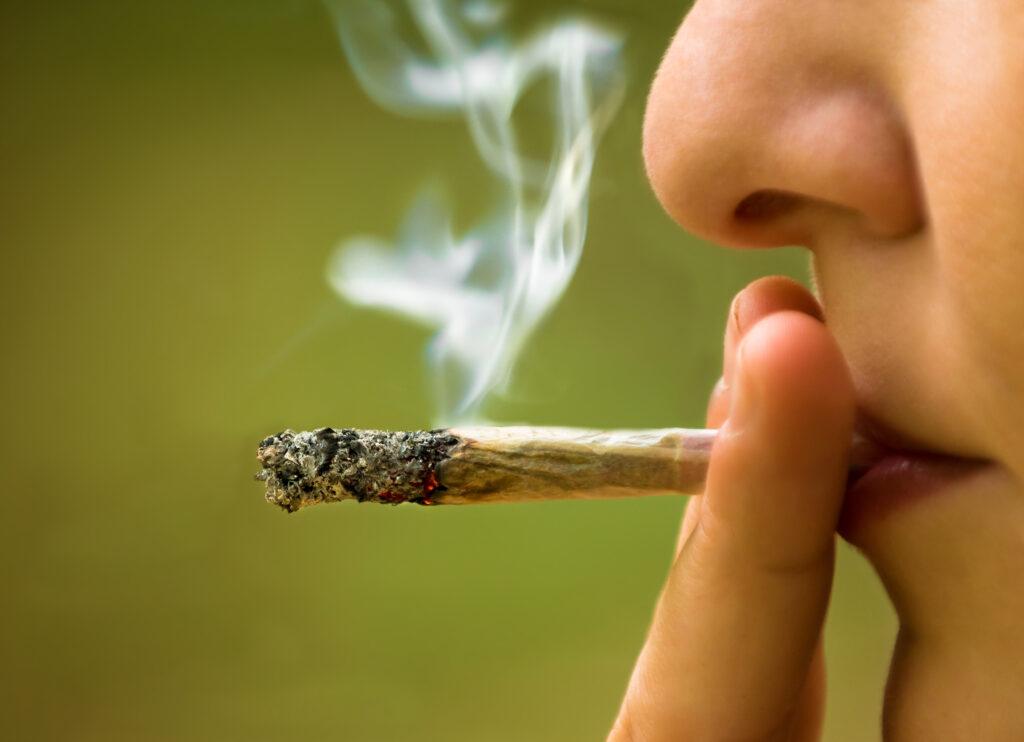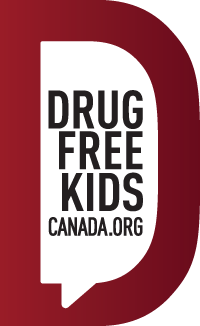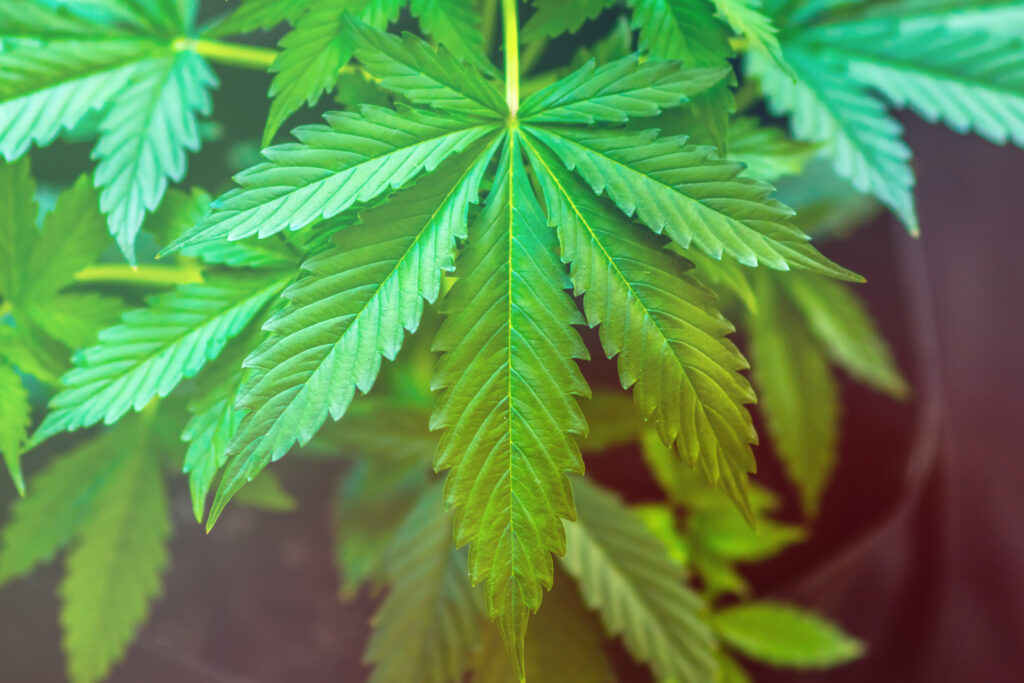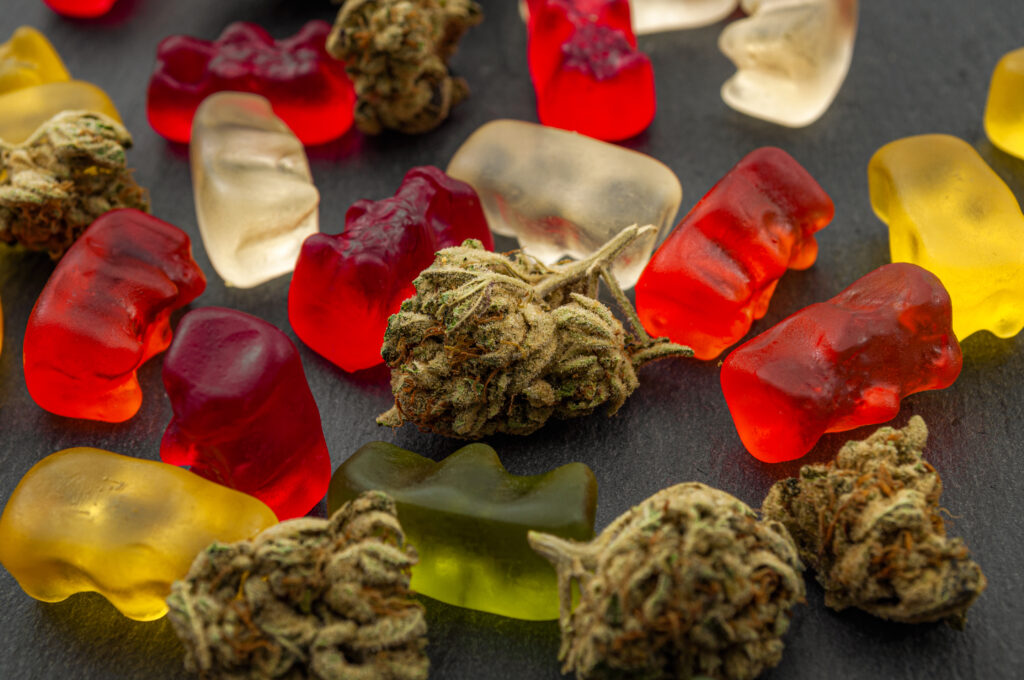Cannabis
Get to know more about cannabis and explore the effects that early use of cannabis products can have on a young person’s life, then have a conversation with your child.
ALSO KNOWN AS: marijuana, bud, blunt, chronic, dab, dope, ganja, grass, green, herb, joint, loud, Mary Jane, MJ, pot, reefer, skunk, smoke, trees, wax, or weed. Variants include: hash, shatter, K2, spice.
Cannabis is the second most commonly used substance in Canada, after alcohol.
Cannabis is a product of the plant Cannabis Sativa. The main active chemical in cannabis is THC (delta-9-tetrahydrocannabinol). Of the roughly 400 chemicals found in the cannabis plant, THC affects the brain the most. It is a mind-altering chemical that gives those who use cannabis a high. Another active chemical in cannabis is CBD (cannabidiol), which is being studied for its potential medical applications and its ability to moderate the effects of THC.
For information on the medicinal use of cannabis please consult: CCSA’s Clearing the Smoke on Cannabis: Medical Use of Cannabis and Cannabinoids.

What does cannabis look like & how is it used?
Cannabis can be consumed in several ways; inhaled, ingested, or applied topically, and there are significant differences in the way the effects are felt.
Dried cannabis can be rolled into a cigarette, called a “joint” or in a cigar, called a “blunt”. It can be smoked in a water pipe or “bong” or vaped in an e-cigarette or other vaping devices.
Cannabis edibles can be brewed as tea, infused into drinks, or mixed into food and ingested as candies, cookies, and brownies. Consuming cannabis edibles like brownies or cookies is considered by some youth to be a less risky way of consuming than smoking it.
Talk about CannabisIngesting cannabis can have delayed and unpredictable effects. A long waiting time is recommended when ingesting cannabis products to avoid the accumulation of effects.
Cannabis extracts, which include oils and tinctures can also be ingested or inhaled in a pipe or bong and/or vaped with an e-cigarette or other vaping devices. Cannabis extracts can often have more concentrated levels of THC.
All cannabis products are legal for retail sale only at licensed outlets. Cannabis should be produced by licensed producers and purchased only from licensed vendors. Evidence suggests that illegal cannabis products can be contaminated with pesticides and harmful chemicals. 1
Synthetic cannabinoids like K2 or Spice should be completely avoided.

Inhalation vs Ingestion – What’s the difference?
Depending on how it is consumed, cannabis affects the body in different ways.
Inhaling – Smoking or Vaping
When cannabis or cannabis extracts like oils are inhaled or vaped, THC is delivered directly to the lungs, passes through the bloodstream, and on to the brain where the effects (the “high”) are felt within minutes of inhaling.
- A few seconds or minutes to start to feel some of the effects
- 30 minutes to feel the full effects
- 6 hours for some of the acute or immediate effects to subside
- Some residual effects last up to 24 hours

The number of Ontario high school students (grades 7- 12) vaping cannabis doubled between 2015 (5%) and 2019 (10%) 2
Important to know: Vaping is considered to be a smoking cessation aid for adults who already smoke. Vaping is not considered safe at all for youth, young adults, pregnant women, or any adult who does not already use tobacco products.
Ingesting – Eating or Drinking
The effects of ingesting cannabis are delayed – they can take much longer to appear. When cannabis edibles or beverages are ingested, THC travels to the stomach, then to your liver before reaching your bloodstream and brain. The liver metabolizes the THC to a stronger chemical called 11-hydroxy-THC, which combined with the THC consumed, can make the “high” seem more intense.

Depending on the individual, the effects of eating cannabis can take 30 minutes to two hours to be felt.
- 30 minutes to 2 hours to start to feel some of the effects
- 4 hours to feel the full effects
- Up to 12 hours for acute effects to subside
- Some residual effects can last up to 24 hours
Cannabis edible consumption by Ontario high school students in Grades 7 through 12 increased between 2017 and 2019 – from 11% to 14% 3

Signs & symptoms of cannabis use
There is no single reason why a young person might choose to use cannabis. A teen or young adult may try cannabis for social reasons, as a way to fit in or socialize with their peers, or because they think “everyone is doing it.” They may also use cannabis as a coping mechanism to deal with life stresses,4 to help them sleep, stimulate their appetite or reduce worry or stress.5
Effects and RisksIf a young person is self-medicating with cannabis to cope with anxiety or stress, they may be more likely to continue if it works for them. They might think “ When I feel stressed out, I smoke pot and it relaxes me”.
They may continue to use cannabis instead of finding healthy behaviours as alternatives – like sports, hanging out with a friend, playing music, talking to someone about their feelings, or reading a book – that can help in coping with the stress they feel.
Frequent or regular use of cannabis can lead to cannabis use disorder or addiction. It has an effect on the brain’s reward system – as do all other addictive drugs – the likelihood of developing problem use or addiction increases considerably for those who start young. 6
Cannabis and Canadian youth
The rate of cannabis use is over two times higher among Canadian youth and young adults than adults.7
- Canadian youth continue to have one of the highest rates of cannabis use worldwide. In 2018, the World Health Organization compared lifetime cannabis use among youth aged 15 across 40 countries and found that use by Canadian youth was the third-highest, 23% of boys and 21% of girls. 8
- An estimated one in 5 Ontario students in grades 7-12 (22%) used cannabis in 2019.9
- Cannabis use by students across Canada increased from 16.7% in 2016 – 2017 to 18.1% in 2018 – 2019 10
- It’s estimated that 1 in 6 teens who consume cannabis will develop a cannabis use disorder. 11
- Cannabis was the most common substance associated with substance-related hospitalizations for youth aged 10 to 24 years in 2017–2018. 12
Footnotes
1 – Journal of Toxicology, 2013 Nicholas Sullivan et al.
2,3 – OSDUHS 2019
4,5 – McKiernan &Fleming 2017 Canadian Youth Perceptions on Cannabis, CCSA
6 – Drug Alcohol Depend, Winters and Lee 2008.
7 – Canadian Drug Summary – CCSA May 2020
8 – Health Behaviour in School-aged Children 2018, World Health Organization
9 – OSDUHS 2019
10 – Canadian Student Tobacco, Alcohol and Drugs Survey 2018–2019 (CSTADS)
11 – Government of Canada. (2019). Addiction to cannabis. Retrieved from https://www.canada.ca/en/health-canada/services/drugsmedication/cannabis/health-effects/addiction.html
12 – Canadian Institute for Health Information. (2019). Hospital Stays for Harm Caused by Substance Use Among Youth Age 10 to 24
- Mixing substances can have negative effects
 Teens don’t typically use alcohol OR cannabis; they use both, at the same time. Learn more about the potential impacts of polysubstance use.
Teens don’t typically use alcohol OR cannabis; they use both, at the same time. Learn more about the potential impacts of polysubstance use. - Back to School
 Substances at a Glance – We’ve created four easy to read, informational resource sheets about the substances that kids are probably hearing about the most, so you can talk about them with your kids.
Substances at a Glance – We’ve created four easy to read, informational resource sheets about the substances that kids are probably hearing about the most, so you can talk about them with your kids.
Looking for ways to help support your child’s mental wellness? Read Mental Health and Substance Use.















